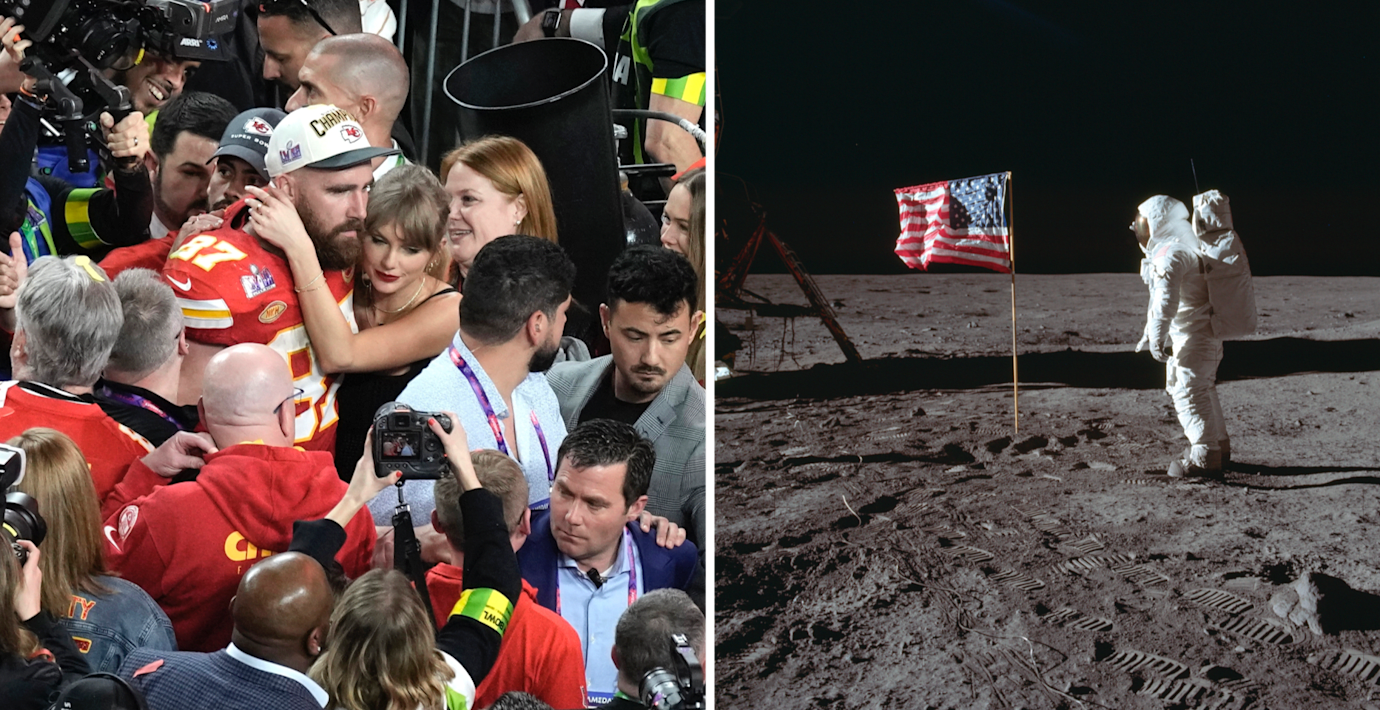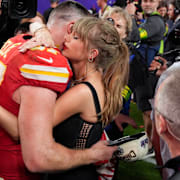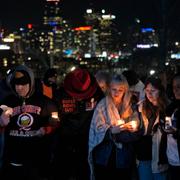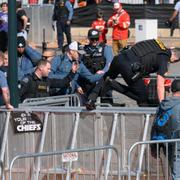
Super Bowl slog rekord – mest sedda sedan Apollo 11
123,4 miljoner människor såg Kansas City slå San Francisco i Super Bowl i söndagskväll, rapporterar flera medier. Det innebär att finalen blev den mest sedda någonsin, och det näst mest sedda programmet i USA:s tv-historia. Bara månlandningen 1969 – som sågs av drygt 150 miljoner – var en större tittarsuccé, skriver Forbes.
Orsaken till rekordet stavas som väntat Taylor Swift, som befann sig i publiken. Relationen mellan världsstjärnan och Kansas Citys Travis Kelce har lockat massor av nya fans till NFL.
bakgrund
Apollo 11:s månlandning
Wikipedia (en)
Apollo 11 (July 16–24, 1969) was the American spaceflight that first landed humans on the Moon. Commander Neil Armstrong and Lunar Module Pilot Buzz Aldrin landed the Apollo Lunar Module Eagle on July 20, 1969, at 20:17 UTC, and Armstrong became the first person to step onto the Moon's surface six hours and 39 minutes later, on July 21 at 02:56 UTC. Aldrin joined him 19 minutes later, and they spent about two and a quarter hours together exploring the site they had named Tranquility Base upon landing. Armstrong and Aldrin collected 47.5 pounds (21.5 kg) of lunar material to bring back to Earth as pilot Michael Collins flew the Command Module Columbia in lunar orbit, and were on the Moon's surface for 21 hours, 36 minutes before lifting off to rejoin Columbia.
Apollo 11 was launched by a Saturn V rocket from Kennedy Space Center on Merritt Island, Florida, on July 16 at 13:32 UTC, and it was the fifth crewed mission of NASA's Apollo program. The Apollo spacecraft had three parts: a command module (CM) with a cabin for the three astronauts, the only part that returned to Earth; a service module (SM), which supported the command module with propulsion, electrical power, oxygen, and water; and a lunar module (LM) that had two stages—a descent stage for landing on the Moon and an ascent stage to place the astronauts back into lunar orbit.
After being sent to the Moon by the Saturn V's third stage, the astronauts separated the spacecraft from it and traveled for three days until they entered lunar orbit. Armstrong and Aldrin then moved into Eagle and landed in the Sea of Tranquility on July 20. The astronauts used Eagle's ascent stage to lift off from the lunar surface and rejoin Collins in the command module. They jettisoned Eagle before they performed the maneuvers that propelled Columbia out of the last of its 30 lunar orbits onto a trajectory back to Earth. They returned to Earth and splashed down in the Pacific Ocean on July 24 after more than eight days in space.
Armstrong's first step onto the lunar surface was broadcast on live TV to a worldwide audience. He described the event as "one small step for [a] man, one giant leap for mankind." Apollo 11 effectively proved U.S. victory in the Space Race to demonstrate spaceflight superiority, by fulfilling a national goal proposed in 1961 by President John F. Kennedy, "before this decade is out, of landing a man on the Moon and returning him safely to the Earth."
Omni är politiskt obundna och oberoende. Vi strävar efter att ge fler perspektiv på nyheterna. Har du frågor eller synpunkter kring vår rapportering? Kontakta redaktionen



